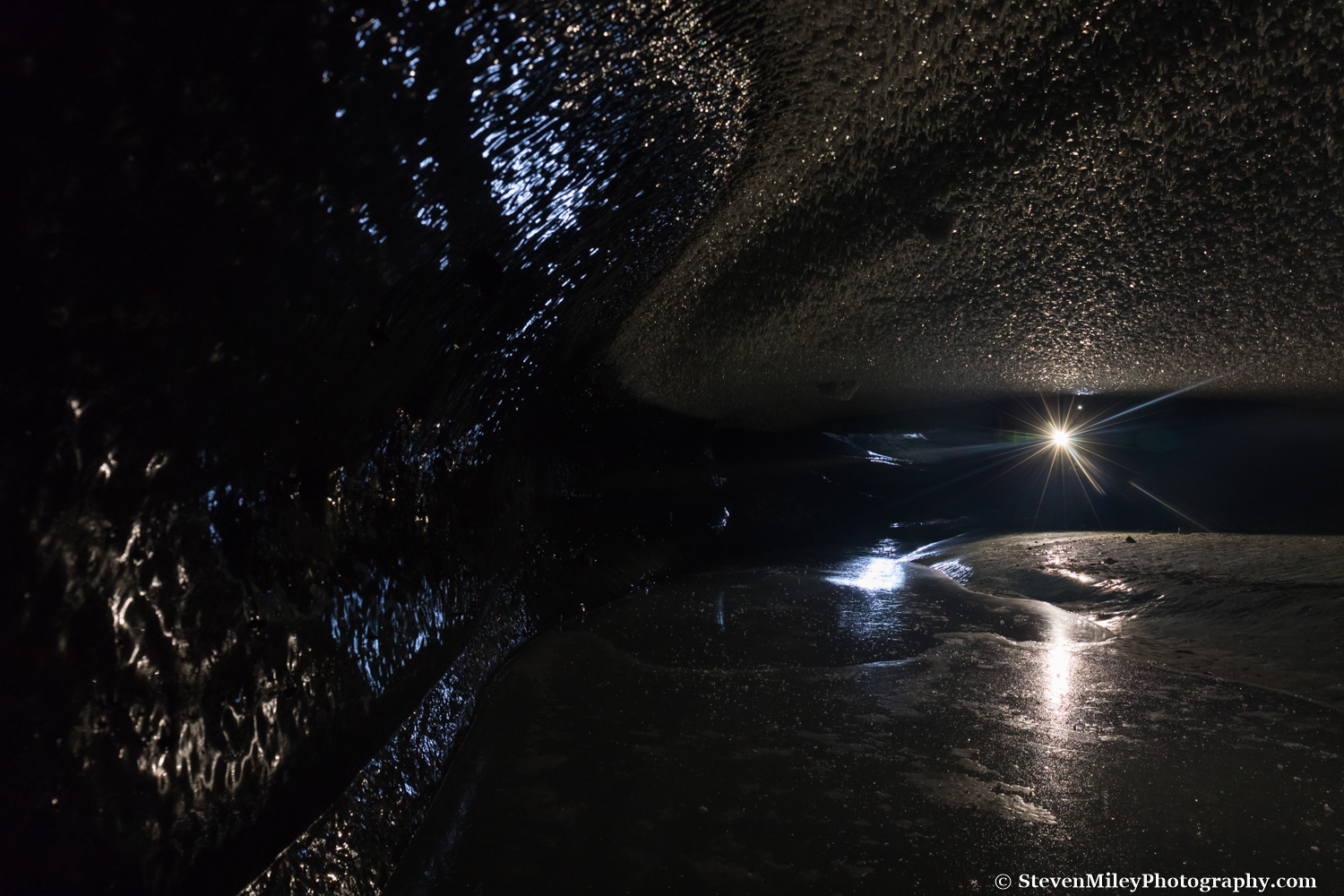I’m officially making it a tradition: here are my 10 favorite Alaska images from 2018, in no particular order. Thanks for following my photography adventures in 2018—I look forward to taking many new shots in 2019!
1. Devils Thumb Aurora
I camped overnight on a mountain ridge with a couple friends to catch the aurora over this rock outcropping in the Alaska Range called Devils Thumb. The aurora danced for a few hours that night as we watched from a couple thousand feet above the Richardson Highway. Read my blog post about this adventure.
2. Canwell Glacier Cave
This ice cave has been around for several years now hidden in the moraine of Canwell Glacier. It has become increasingly difficult to access over time but it never disappoints. The ice near the entrance is a beautiful translucent aquamarine color and the cave extends into total darkness after several twists and turns. Read more about my trip to this ice cave here.
3. Torchlight Aurora
Campfires are a great way to light the foreground in an aurora shot on a moonless night, but there’s no wood to burn on most of Alaska’s mountainous terrain (tree line is roughly 3000 feet in Alaska) so I carried supplies to make a torch on top of Donnelly Dome for this shot. I would like to try a shot like this again on a more rugged mountain. Read more about this adventure here.
4. Pass To Wood River
The highlight of my summer was hiking nearly 130 miles from Black Rapids to Healy across the eastern Alaska Range. This is my favorite shot from the trip because you can tell we’re in the middle of a rugged, off-trail backcountry expedition by studying the details and terrain without any narrative. Read about this traverse here.
5. Twenty Below Doghouse Portrait
I loved how the light was catching this sled dog’s face framed by the doghouse opening on this frigid morning in Interior Alaska. The frozen dog spit helps convey how cold it was at the time, nearly twenty degrees (°F) below zero.
6. Eastern Alaska Range Sunrise
I’ve taken many selfie shots on a timer like this one but I don’t think I’ve ever looked so awesome. I hiked up a mountain ridge overnight to catch this 3 a.m. sunrise in the eastern Alaska Range near Black Rapids, and after sunrise I hiked all the way to the ridgeline above the Jarvis Glacier canyon. Hands down my favorite day spent in the mountains last summer. Read more about this adventure here.
7. Onemile Creek Frozen Waterfall
I made a couple trips to this frozen waterfall in the spring. A little scrambling will get you behind the ice, which glows like an electric blue curtain. Read about this waterfall here.
8. Pioneer Peak Sunrise With Denali
I hiked overnight along the Pioneer Peak-Austin Helmers Trail for this sunrise shot of Pioneer Peak with Denali in the background. I mainly wanted to hike the trail, but I planned this shot in Google Earth beforehand and it came out fairly nice. It says “Palmer, Alaska” without being too obvious.
9. Hidden Alpine Lake
There’s a trail on the Kenail Peninsula that doesn’t see much traffic even though it leads to beautiful views in no time. My brother and I made an excursion from the trail to visit this pristine alpine lake and another two lakes feeding it from above. We had just hiked the Reed Lakes Trail in Hatcher Pass which was flooded with people, so it was nice to have scenery like this all to ourselves.
10. Donnelly Lake Reflection
I camped overnight at Donnelly Lake to shoot the aurora and wound up with relatively calm water the next morning, which made for some nice reflection shots of the Hayes Range. This wasn’t the sharpest reflection I photographed but it features my tent, which hints that this isn’t Wonder Lake or Reflection Pond in Denali National Park, though the terrain might look similar.
















